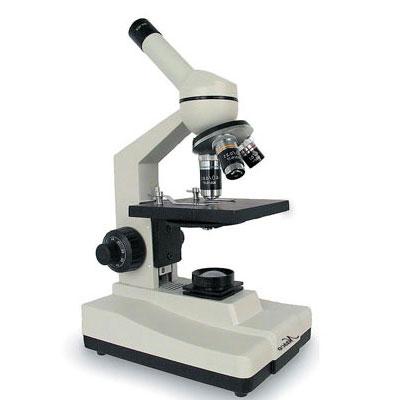Light microscope: Difference between revisions
Jump to navigation
Jump to search
No edit summary |
No edit summary |
||
| Line 16: | Line 16: | ||
*Specimen may be disfigured during preparation to be viewed under the microscope | *Specimen may be disfigured during preparation to be viewed under the microscope | ||
*The resolving power is 1 nm for biological specimens | *The resolving power is 1 nm for biological specimens | ||
*Only has a resolution of 0.2 μm - which is relatively poor in comparison to other microscopes | *Only has a resolution of 0.2 μm - which is relatively poor in comparison to other microscopes<sup>[2]</sup>. | ||
=== References === | === References === | ||
<references /> | <references /> | ||
Revision as of 00:30, 10 December 2018

The light microscope uses light energy to see small objects on a slide through an eyepiece. The direction of light upon to the slide, focused by lenses, magnifies the size of the objects to the viewer[1].
Advantages
- Inexpensive to buy and operate
- Relatively small
- Both living and dead specimens can be viewed
- Little expertise is required in order to set up and use the microscope
- The original colour of the specimen can be viewed
Disadvantages
- Maximum magnification of 1500x
- Specimen may be disfigured during preparation to be viewed under the microscope
- The resolving power is 1 nm for biological specimens
- Only has a resolution of 0.2 μm - which is relatively poor in comparison to other microscopes[2].